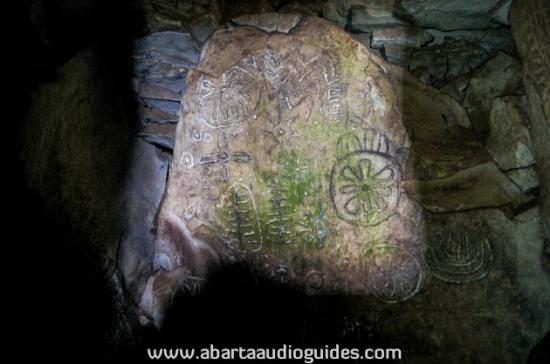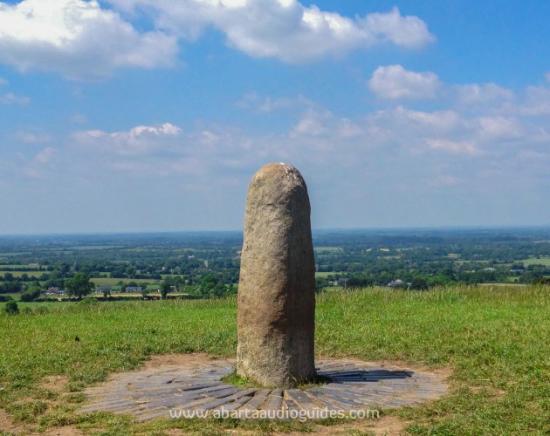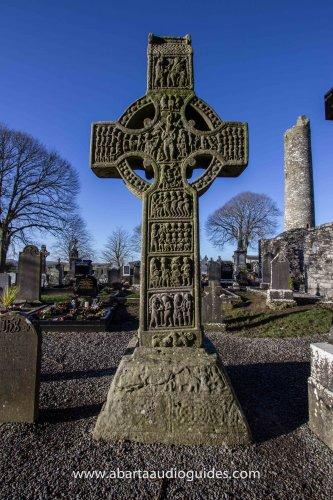Archaeologist Neil Jackman takes us on a guided tour of the treasures of one of Ireland’s most important historical hotspots.
All photographs © Neil Jackman /abartaaudioguides.com
Source - http://www.thejournal.ie/boyne-valley-neil-jackman-hidden-ireland-1348057-Mar2014/

Continuing from last year’s Hidden Heritage series, archaeologist Neil Jackman has more suggestions for great historical sites to visit around the island of Ireland.
In his first article of 2014, Neil gives an overview of some of the major periods in Irish archaeology and history ranging from the Neolithic period to the eighteenth century, by looking at the Boyne Valley region in Counties Meath and Louth.
This region is synonymous with the incredible World Heritage Site of Newgrange and the Brú na Bóinne tombs, but for almost every period in Irish history from the furthest reaches of our prehistoric past to the early modern period, it has a perfect site to encounter the story of Ireland.
The Neolithic period: Ireland’s first farmers (c. 4200-2400 BC)

Newgrange
The Neolithic Period that began around 6000 years ago in Ireland, marked one of the most important changes in all of human history – people began to farm.
When people stopped living as semi-nomadic hunter-gatherers, Ireland was almost completely forested. The Neolithic Irish began the laborious process of clearing vast areas of woodland to create fields for pasture and crops. Using only stone tools like flint and polished stone axes, the work would have been incredibly arduous. With the change to farming, groups banded together to create territories.
One of the major developments in Neolithic Ireland is the way that societies treated their dead. The Brú na Bóinne complex is one of the most important prehistoric landscapes in Europe and has been rightly designated as a World Heritage Site.
The tomb of Newgrange is possibly the most famous and iconic, but other major tombs like Knowth, Dowth and Townley Hall are also remarkable examples of the skill and spirituality of the Neolithic Irish.
Newgrange pre-dates Stonehenge and the Great Pyramid of Giza by centuries, and as it is aligned with the Winter Solstice it is also the earliest structure known to have an astronomical function. The great tomb at Knowth nearby to Newgrange has a massive collection of megalithic art – in fact the Boyne Valley has an unparalleled wealth of megalithic art.
The rest of Ireland has 60 stones with art depicted, in the whole of Britain there are only 12 stones with megalithic art, France has 200, the Iberian Peninsula has less than 200. In County Meath alone there around 1,000 stones bearing megalithic art.
But what did the art mean? Archaeologists and enthusiasts have long debated the meaning behind the art, with theories ranging from the artists being in a trance or state of altered consciousness, or the art represents geographical features in the landscape. Looking at the beautiful Equinox Stone from Cairn T at Loughcrew, another c.5,000-year-old tomb at the edge of the Boyne Valley, the images look like representations of natural features like ferns, flowers, the inside of fruit and perhaps trees. What do you think it represents?

Loughcrew megalithic art
Bronze Age and Iron Age (c. 2400 BC – 400 AD)
Metal working began in Ireland in around 2500 BC. The knowledge of working copper spread to Ireland from continental Europe. Early copper working produced simple flat copper axes that were similar in shape to stone axes. Along with working copper and bronze, gold working also became prevalent. In fact the Bronze Age could easily be known as Ireland’s ‘First Golden Age’ as an unprecedented amount of golden artefacts have been discovered across the country.
The Late Bronze Age and Iron Age saw the rise of ceremonial centres where people would have gathered from all over Ireland. The Hill of Tara is one of the most iconic archaeological landscapes in Ireland, and was the setting for rituals and gatherings throughout the prehistoric period.

Hill of Tara
As well as the famous Hill of Tara, the Boyne Valley has two more important ritual centres. Tlachtga, now known as the Hill of Ward, just outside of Athboy is another atmospheric place to visit. At Halloween, hundreds of people still gather on the hill to try to recreate the rituals at Samhain. Near Kells, the area of Teltown is absolutely packed with archaeological monuments, believed by some to be the venue for Ancient Ireland’s version of the Olympic Games.
The Early Medieval Period (400–1200 AD)
The story of the dawn of Christianity in Ireland is often bound up in that of St Patrick, and sites like The Hill of Slane are featured in the tales of Patrick. There are other great monastic sites in the Boyne Valley, like Monasterboice in County Louth; home to a well-preserved round tower and arguably the finest high crosses in Ireland. The South Cross, also known as Muiredach’s Cross, is simply spectacular, and a testament to the skill of the craftsmen who made it sometime in the early tenth century.

Monasterboice
The town of Kells also has a rich collection of early medieval buildings and features to discover. It is associated with one of Ireland’s most important saints, St Colmcille (also known as Columba), who established a monastery here in the sixth century. Kells is thought to be the place where the world famous Book of Kells was completed, and by the ninth century the monastery in Kells was gaining in prestige and renown across Christian Europe.
Today you can visit the spectacular round tower that dates to the tenth century. The round tower probably served as a bellhouse and would have been an obvious marker in the landscape to weary pilgrims who were travelling to visit the sacred relics of Saint Colmcille. This tower also has a darker story: it is within this tower that the High King Murchad Ua Máelsechnaill was murdered in 1076.

St Colmcille’s House, Kells
Close to the tower you can see one of the wonderful early-medieval high crosses at Kells. The town has a number of high crosses, the most spectacular one is The Market Cross that you can see outside of the Old Courthouse. As well as the monastic site, Kells also boasts a rare example of an early Irish church. The building is known as St Colmcille’s House, and you can find it on Church Lane.
PART.2